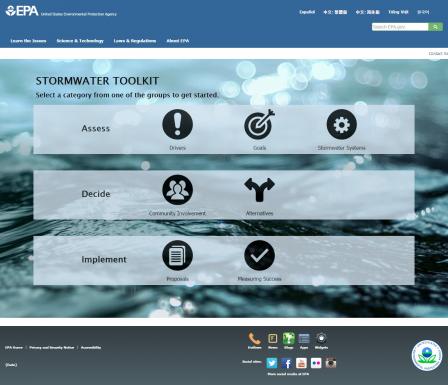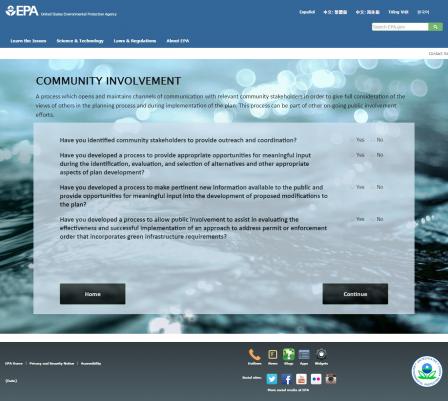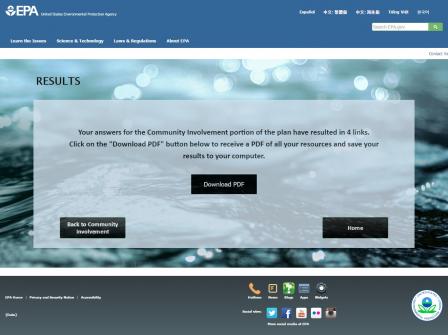Stormwater Planning
Community Solutions for Voluntary Long-Term Stormwater Planning
Guide
Urban stormwater continues to be a significant source of water pollution and public health concern. As communities continue to grow and develop their local economies, they look for sustainable and effective approaches to reduce these existing and emerging sources of pollution.
EPA released a draft guide, Community Solutions for Stormwater Management: A Guide for Voluntary Long-Term Planning, to assist states and local governments in developing and implementing effective long-term stormwater plans.
The document describes how to develop a comprehensive long-term community stormwater plan that integrates stormwater management with communities' broader plans for economic development, infrastructure investment and environmental compliance. Through this approach, communities can prioritize actions related to stormwater management as part of capital improvement plans, integrated plans, master plans or other planning efforts.
Early and effective stormwater planning and management by communities as they develop will provide significant long-term cost savings while supporting resilience, economic growth and quality of life.
Toolkit
EPA is developing a new web-based Stormwater Toolkit to be released at a later date. This toolkit will include technical and financing resources to walk communities through the long-term stormwater planning process provided in the Community Solutions for Stormwater Management guide. The screenshots below provide a preview of the upcoming toolkit.
 The landing page of the Stormwater Toolkit begins to walk users through developing a long-term stormwater plan. It lists the "elements" of the plan that correspond with those found in the Guide.
The landing page of the Stormwater Toolkit begins to walk users through developing a long-term stormwater plan. It lists the "elements" of the plan that correspond with those found in the Guide.
 Users will answer a series of questions to tailor the EPA resources that will be provided to them.
Users will answer a series of questions to tailor the EPA resources that will be provided to them.
 After completing each set of questions, users will receive a tailored set of EPA resources relating to the elements of the Guide. These resources can be used to develop elements of the plan that the community has not yet completed.
After completing each set of questions, users will receive a tailored set of EPA resources relating to the elements of the Guide. These resources can be used to develop elements of the plan that the community has not yet completed.
In the meantime, communities may reference EPA's currently available models, tools, and technologies for communities to manage urban stormwater: Green Infrastructure Modeling Toolkit.
Technical Assistance
EPA will provide coordinated technical assistance in five communities to develop long-term stormwater plans to serve as national models:
- Burlington, Iowa
- Chester, Pennsylvania
- Hattiesburg, Mississippi
- Rochester, New Hampshire
- Santa Fe, New Mexico
EPA will leverage the lessons learned from these efforts by sharing information related to lowering barriers to long-term stormwater planning, making progress on human health and water quality objectives, and decreasing the costs of stormwater management.
